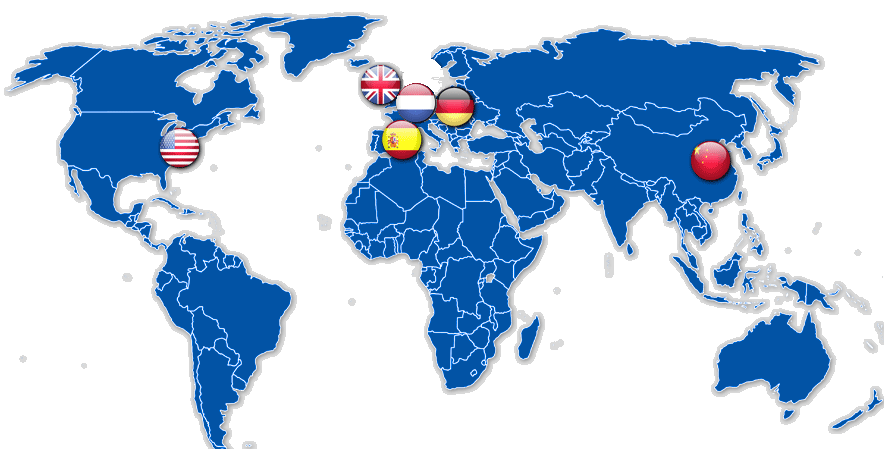
PIRE I: Bilingualism, mind, and brain: An interdisciplinary program in cognitive psychology, linguistics, and cognitive neuroscience
Research Network
PIRE Faculty
- Philip Baldi, Professor Emeritus of Linguistics and Classics
- Matthew Carlson, Assistant Professor of Spanish and Linguistics
- Paola (Giuli) Dussias, Professor of Spanish, Linguistics and Psychology; Head, Spanish
- Henry (Chip) Gerfen, Professor and Department Chair, World Languages & Cultures
- Carrie Jackson, Associate Professor of German and Linguistics
- Judith Kroll, Distinguished Professor of Psychology, Linguistics, and Women’s Studies
- Ping Li, Professor of Psychology and Linguistics
- John Lipski, Edwin Erle Sparks Professor of Spanish & Linguistics; Director, Program in Linguistics
- Carol Miller, Professor of Communication Sciences and Disorders and Linguistics
- Karen Miller, Associate Professor of Spanish and Linguistics
- Marianna Nadeu, Assistant Professor of Spanish and Linguistics
- Richard Page, Associate Professor of German and Linguistics; Head, German Department
- Michael T. Putnam, Associate Professor of German and Linguistics
- Rena Torres Cacoullos, Professor of Spanish and Linguistics
- Janet Van Hell, Professor of Psychology and Linguistics
- Daniel Weiss, Associate Professor of Psychology
International Partners – Europe
Spain
- Teresa Bajo, Psychology at the University of Granada
- Albert Costa, Social and Behavioral Sciences at Pompeu Fabra University
- Josep Demestre, Psychology at the Universitat Rovira i Virgili
The Netherlands
- Dorothee Chwilla, Institute for Brain, Cognition, and Behavior at the Radboud University Nijmegen
United Kingdom
- Margaret Deuchar, Linguistics at Bangor University
- Guillaume Thierry, Cognitive Neuroscience at Bangor University
Sweden
- Marianne Gullberg, Psycholinguistics at Lund University
Germany
- Holger Hopp, English Linguistics at the University of Braunschweig
- Sonja Kots, Neuropsychology at the Max Planck Institute, Leipzig
International Partners – Asia
China
- Taomei Guo, Psychology at Beijing Normal University
- Hua Shu, Cognitive Neuroscience at Beijing Normal University
- Li Hai Tan, Linguistics and Cognitive Sciences at the University of Hong Kong
- Brendan Weeks, Communication Sciences and Education at the University of Hong Kong
Domestic Partners
- Thomas Allen, Education Neuroscience at Gallaudet University
- Ken Pugh, Haskin Laboratories
- Jill Morford, Linguistics at the University of New Mexico
Thank you to everyone who has worked on PIRE I!
Principles for PIRE I
Common Ground Model
Our PIRE I project has implemented the Common Ground Model to investigate the consequence of having multiple languages exist within the same mind and brain. Our research has employed bilingual language experience as a tool to investigate universal principles of learning and cognition and their neural underpinnings. In past work, we have shown that the presence of a second language (L2) and contact across two languages in bilingual populations fundamentally changes language learning, representation, and processing.
Comparative Research
PIRE I has combined the power of comparative research across multiple language pairings (English, German, Dutch, Spanish, Chinese) with insights of research on bilingualism, adopts across-disciplinary approach by integrating research methodologies (e.g., fMRI, ERP, modeling) from linguistics, psychology, and cognitive neuroscience, and examines subject populations of different ages and in different modalities (children, adults, and deaf signers). Cross-linguistic research has examined the consequences of distinct linguistic forms across native speakers of languages that differ in structure and aspects of language use. Bilingual research examined these consequences when the two languages exist in one and the same mind.
Research Themes
Competition and Convergence Across Two Grammatical Systems
Tow lines of research, one with proficient bilinguals, and one with L2 learners, has examined the way in which grammatical forms are acquired and used in an L2 and the way in which proficient bilinguals resolve potential conflicts when the grammars of the L1 and L2 conflict.
Computational and Neurocognitive Studies of Second Language Learning
Why is it so much easier for children than for adults to acquire a second language? What are the cognitive and neural underpinnings for this difference? We have addressed these issues from a variety of perspectives, with bot computational and neurocognitive approaches.
Cross-language Interactions and their Cognitive Consequences
A discovery about L2 learning, to which our team has contributed, is that it is virtually impossible for bilinguals to completely switch off one language when using the other. It was once believed that this was true only during early stages of L2 learning, when the L1 is highly active. This research demonstrates that both languages are active for even proficient bilinguals, suggesting that although the nature of cross-language competition may change with developing L2 skill, the lexicon and grammar of the two languages produce mutual influences. These influences also modulate the way in which the native language is used, so that bilinguals differ from monolinguals in both languages.